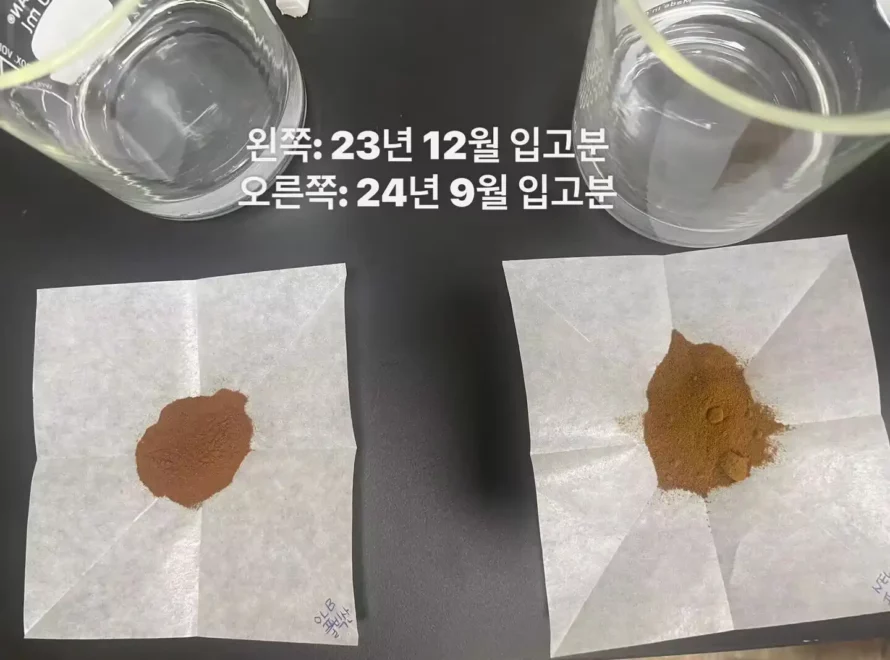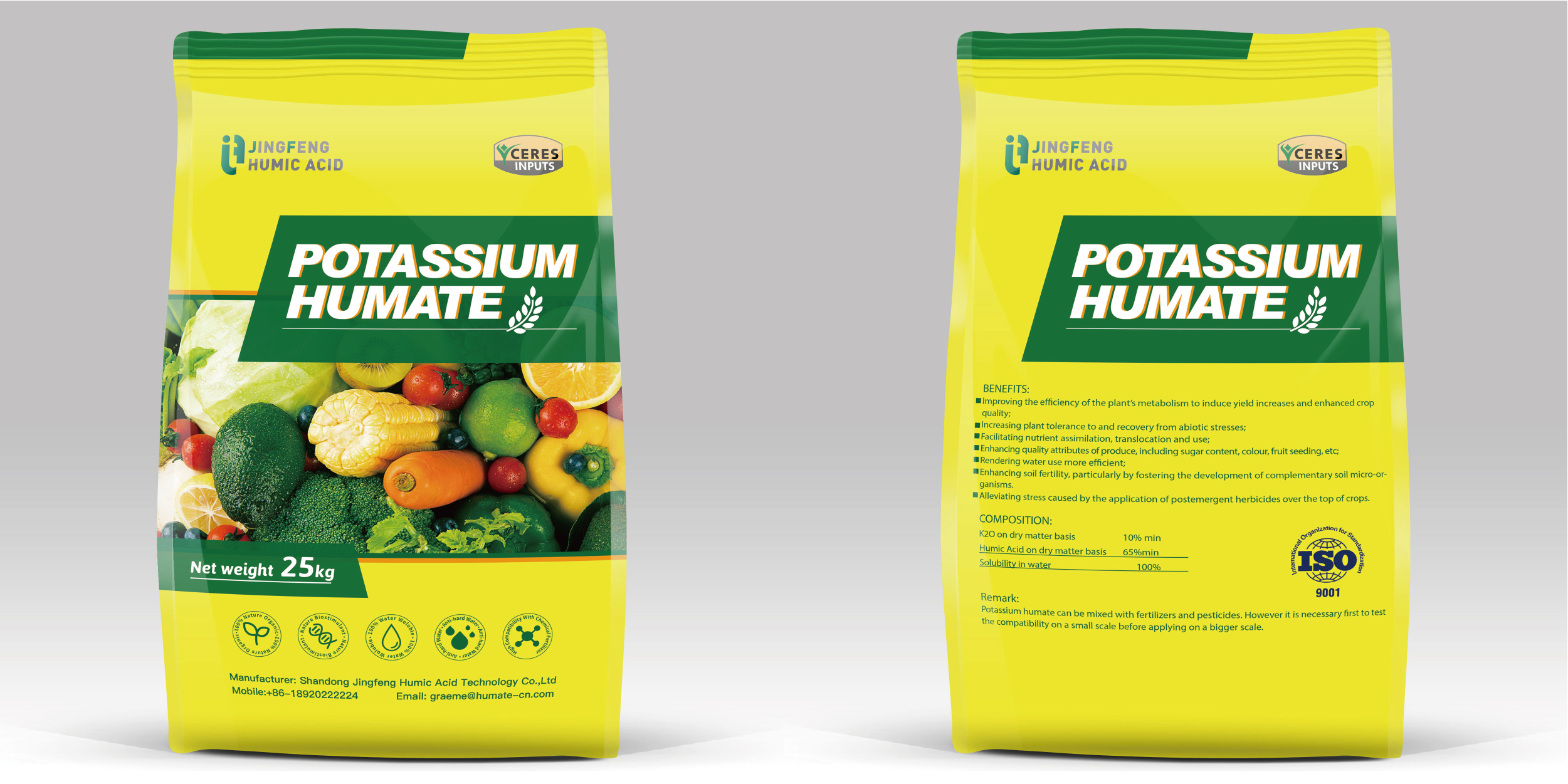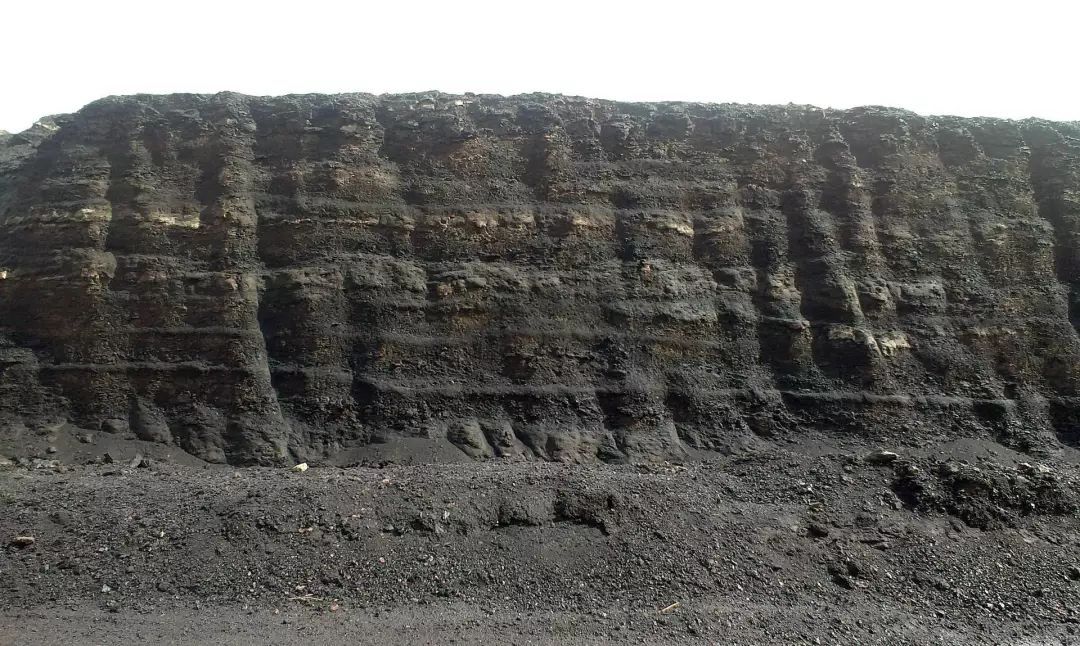Introduction to Premium Granular Humic Acid
Granular humic acid potassium humate represents a revolutionary advancement in soil amendment technology. Unlike conventional powdered or liquid humates, our high-hardness potassium humate granules (10% moisture content) are specially engineered for perfect compatibility with blended fertilizers. With 65% humic acid content and 10% potassium oxide (K₂O), this premium soil conditioner delivers unparalleled agronomic benefits while maintaining perfect physical stability in fertilizer blends.
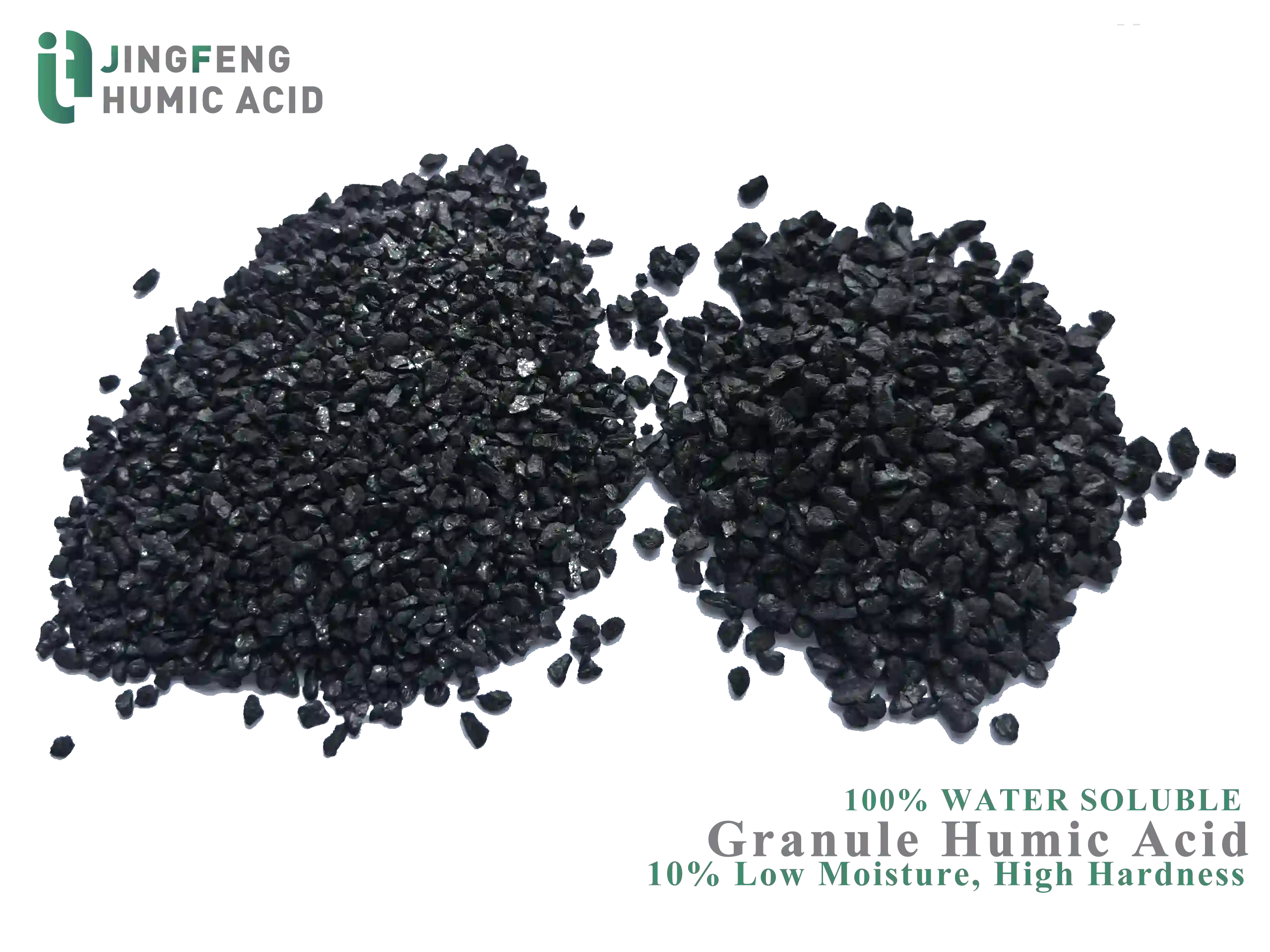
Why Choose Our Granular Humic Acid?
- Optimal moisture content (10%) prevents moisture transfer to fertilizer granules
- Exceptional granule hardness (≥15N crush strength) resists breakdown during handling
- Non-staining formulation maintains original fertilizer color
- Precision-sized granules (2-4mm) ensure uniform blending
- Slow-release properties provide season-long benefits
Section 1: Product Specifications & Technical Advantages
1.1 Physical & Chemical Properties for Granular Humic Acid
| Parameter | Specification | Test Method |
|---|---|---|
| Humic Acid Content | 65% ± 2% | ISO 19822:2018 |
| Potassium Oxide (K₂O) | 10% ± 0.5% | ICP-OES |
| Moisture Content | 10% ± 1% | Karl Fischer |
| Granule Hardness | ≥15N | Crush tester |
| Bulk Density | 0.65-0.75 g/cm³ | ASTM B527 |
| pH Value (1% solution) | 9.0-10.5 | pH meter |
| Solubility | ≥99% in 30 min | ISO 8156 |
Key Advantages Over Competitors:
- Zero caking issues even after 12-month storage
- Dust-free operation during blending and application
- Perfect size match with common fertilizer granules (2-4mm)
- Thermal stability up to 150°C (302°F)
1.2 Compatibility with Fertilizers
Our granular humic acid is scientifically proven to maintain stability when blended with:
Nitrogen Fertilizers:
- Urea (46-0-0)
- Ammonium sulfate (21-0-0)
- Calcium ammonium nitrate (27-0-0)
Phosphatic Fertilizers:
- MAP (11-52-0)
- DAP (18-46-0)
- TSP (0-46-0)
Potassic Fertilizers:
- MOP (0-0-60)
- SOP (0-0-50)
- Potassium nitrate (13-0-46)
Compound Fertilizers:
- NPK blends (15-15-15, 17-17-17, etc.)
- Controlled-release fertilizers
- Water-soluble fertilizers
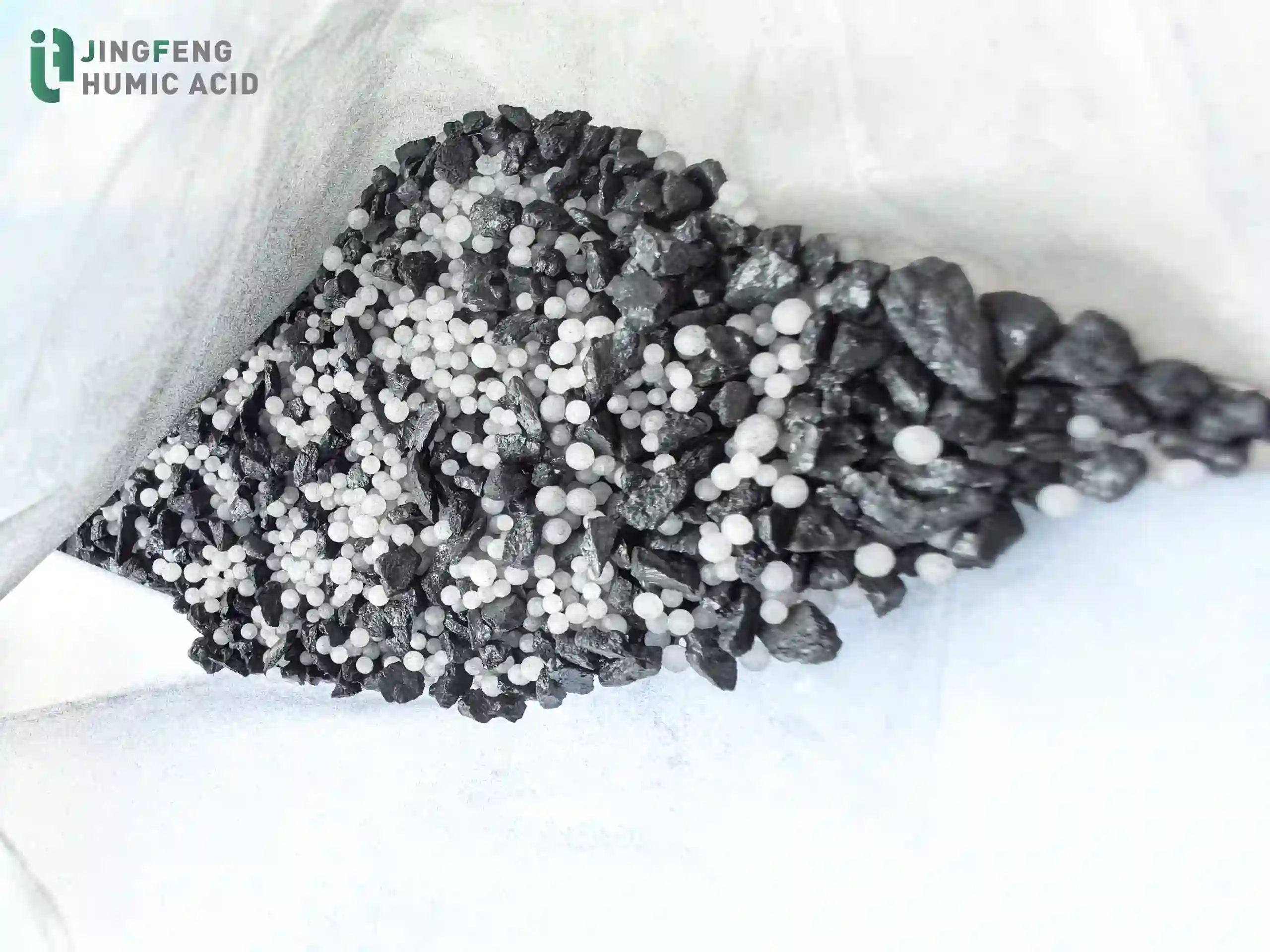
Section 2: Agronomic Benefits & Scientific Mechanisms for Granular Humic Acid
2.1 Soil Improvement Mechanisms
Physical Benefits:
- 25-35% improvement in water holding capacity
- 40-50% reduction in soil compaction
- 3-5x increase in aggregate stability (wet sieve method)
- 15-20% decrease in bulk density
Chemical Enhancements:
- CEC boost: +5-15 cmol(+)/kg
- pH buffering capacity: 0.4-0.6 pH units
- Nutrient retention: 30-50% reduction in leaching
- Heavy metal remediation: 60-80% immobilization
Biological Activation:
- Microbial biomass: 2-3x increase (PLFA analysis)
- Enzyme activity: +45-65% (dehydrogenase, urease)
- Mycorrhizal colonization: 3-4x enhancement
2.2 Crop Performance Data
Corn Production Results:
- Yield increase: 12-25 bu/acre (3-year average)
- Nitrogen efficiency: +20-30% NUE
- Drought resistance: 30-40% better recovery
- Root mass: 50-75% increase (V6 stage)
Soybean Trial Findings:
- Pod count: +15-20 nodes/plant
- Protein content: +1.5-2.0%
- Rhizobia nodulation: 2x more active nodules
- Early maturity: 3-5 days earlier

Section 3: Application Guidelines for Optimal Results for Granular Humic Acid
3.1 Blending Protocols
Dry Blending Best Practices:
- Equipment Setup:
- Batch mixer: 20-30 RPM
- Ribbon blender: 15-20 minutes
- Rotary drum: 5-8 minutes
- Mixing Sequence:
- Add 50% base fertilizer
- Add granular humic acid
- Add remaining fertilizer
- Add micronutrients (if any)
- Recommended Ratios:
Fertilizer Type Humic Acid % Urea 3-5% MAP/DAP 5-8% NPK Blends 4-6% SOP/MOP 2-4%
3.2 Field Application Methods
Pre-Plant Incorporation:
- Rate: 15-25 lbs/acre
- Depth: 4-6 inches
- Equipment: Disc harrow, rototiller
Side-Dress Application:
- Rate: 8-12 lbs/acre
- Placement: 2-3 inches from row
- Timing: V4-V6 (corn), R1-R2 (soybeans)
Fertigation Use:
- Solubility: 85% in 30 minutes
- Concentration: 0.5-1.0 lb/100 gal
- Injection: Last in sequence

Section 4: Quality Assurance & Industry Certifications
4.1 Manufacturing Quality Control for Granular Humic Acid
Raw Material Testing:
- Heavy metals: <10 ppm Cd, <50 ppm Pb
- Pathogens: Zero detection
- Radioactivity: <50 Bq/kg
Production Monitoring:
- Real-time moisture control (±0.5%)
- Granule hardness testing every 30 minutes
- Size distribution analysis (laser diffraction)
4.2 Global Certifications
- OMRI Listed (Organic Materials Review Institute)
- EU Fertilizing Products Regulation (2019/1009)
- REACH Compliant (EC 1907/2006)
- USDA BioPreferred (100% biobased)

Section 5: Economic Benefits & ROI Analysis
5.1 Cost-Saving Calculations
Input Reduction Potential:
- Nitrogen: 15-30% less required
- Phosphorus: 20-40% efficiency gain
- Irrigation: 15-25% water savings
ROI by Crop Type:
| Crop | Added Cost | Yield Value | Net ROI |
|---|---|---|---|
| Corn | $12-15/acre | $45-90/acre | 3:1-6:1 |
| Wheat | $8-10/acre | $30-50/acre | 3:1-5:1 |
| Soybeans | $10-12/acre | $40-60/acre | 4:1-5:1 |
| Vegetables | $25-30/acre | $100-200/acre | 4:1-7:1 |
5.2 Environmental Impact
Carbon Footprint Reduction:
- 0.25-0.35 tons CO₂e/acre sequestered
- 30-40% lower fertilizer emissions
- 20-30% reduced irrigation energy
Water Protection Benefits:
- 50-70% less nitrate leaching
- 40-60% reduced phosphate runoff
- 30-50% lower pesticide mobility

Section 6: Frequently Asked Questions
Q: How does granular humic acid compare to liquid forms? A: Our granules offer:
- 5-8x longer soil residence time
- No compatibility issues in fertilizer blends
- Lower transportation costs (higher density)
- No settling or stratification
Q: What’s the shelf life? A: 36 months when stored:
- Below 30°C (86°F)
- <60% relative humidity
- In original packaging
Q: Can I use it in organic farming? A: Yes, certified for:
- USDA Organic (NOP)
- EU Organic (EC 834/2007)
- Japan Organic (JAS)
Q: How does it prevent fertilizer caking? A: The 10% moisture content is:
- Below the critical humidity of most fertilizers
- Balanced to prevent moisture migration
- Stabilized with natural anti-caking agents

